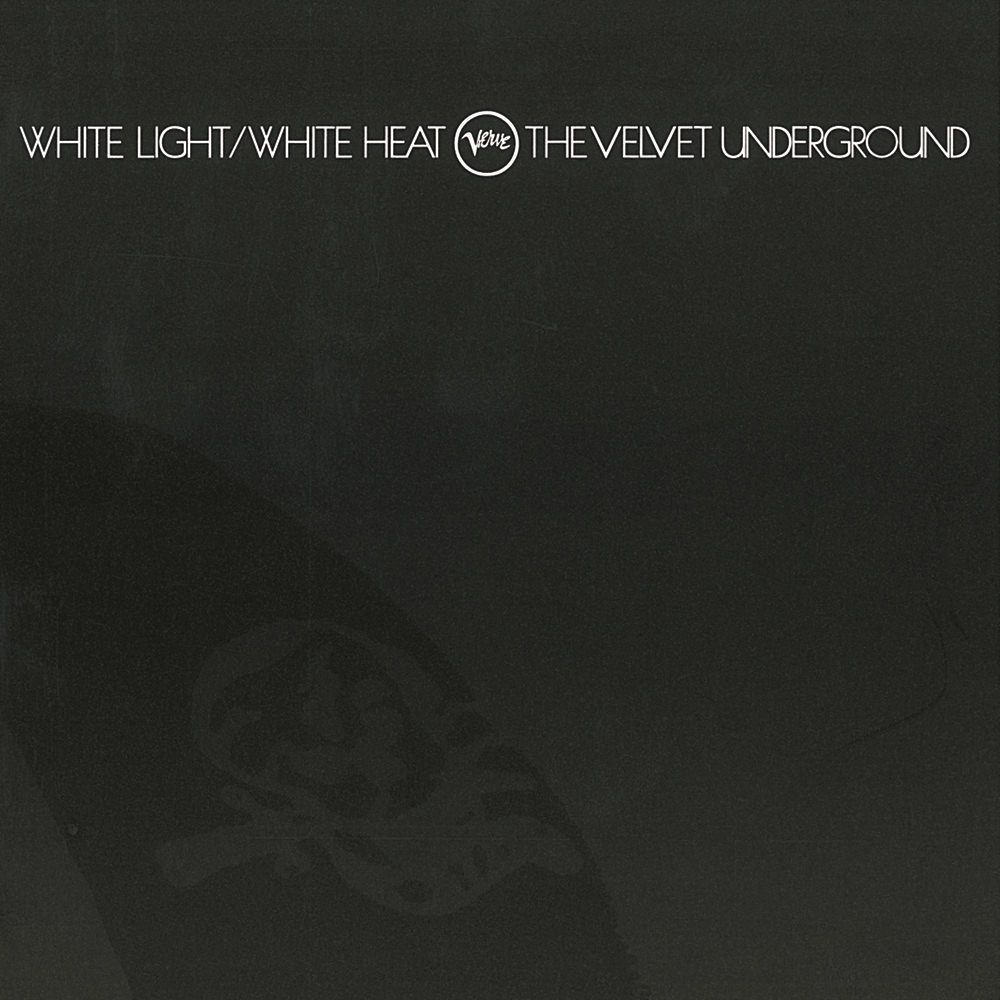The Velvet Underground’s ‘White Light/White Heat’ turns 50
by Joey Molloy
2018-03-13

The Velvet Underground
White Light/White Heat
Scepter Studios, Manhattan · January 1968
In the fifty years since its quiet release in 1968, the Velvet Underground’s White Light/White Heat has become shrouded in myth. For those that have no background knowledge on the Velvets, allow me to give a quick crash course on one of the most influential bands of all time. Started in 1964 and hailing from New York City, the Velvet Underground was an experimental rock act formed by Lou Reed, John Cale, Sterling Morrison, and Angus MacLise. At this time, New York was the hub of the art world. The band befriended the iconic pop-artist Andy Warhol, who served as a sort of mentor and artistic director for the band.
For the band’s debut album, Warhol convinced the group to bring in the German model and actress Nico to share vocal duties with Reed. The result was 1967’s The Velvet Underground & Nico , which, despite Warhol’s instantly recognizable “banana” album cover, was a commercial flop. Today, the record’s cultural importance is truly ineffable, as music scholars and critics praise it for its avant-garde compositions, songwriting, and impact. Musicians across the spectrum, from U2 to Joy Division to Kanye West, have cited the record as an influence.
But this is not the story The Velvet Underground & Nico ; this is the story of the strange, abrasive, and anarchic album that would follow a year later, White Light/White Heat . The first thing that’s different about the band’s sophomore record is no more Nico on vocals. The second thing is the absence of supervision from Warhol. After their debut, Warhol lost faith in his musical project and abandoned the group, leaving the band to toil away. This means White Light ’s direction was guided solely by the band, and that direction was deeper into uncharted musical territory.
In September of 1967, the band went into the studio and unleashed forty-minutes of sonic fury. The resulting mix came out raw and rough, tattered and torn. The bass pulses, the guitar hisses with feedback, and the vocals bounce from channel to channel at varying levels of audibility. The black on black record sleeve hinted at the darkness contained inside, but no one could have expected it to be so extreme.
The record released in late January 1968, barely charted for a week, then slipped out of the mainstream, though that was perfectly okay with the band. White Light/White Heat was never made with any intention of reaching the ears of bourgeois home inhabitants or anyone who tunes into popular radio. No, White Light/White Heat was designed for the outcasts of New York’s underworld: the tormented artists, the proto-punkers, and whoever else that dared to listen from the shadows. Despite making the smallest of splashes at the time, the impact White Light/White Heat would go on to have was that of a seismic earthquake. In its wake, the seeds of punk, noise rock, and other experimental forms of music were sewn.
The album is only six songs, but manages to incorporate many revolutionary ideas and sounds across its 40-minute runtime. The title track ‘White Light/White Heat’ is an uptempo, thrilling start to the album, featuring keys that punch through, guitar that bleeds in, and vocals that hoot and holler. The second song, the 8-and-a-half-minute ‘The Gift’ features solely spoken word from John Cale as he reads out an absurd short story in one channel and a noisy, shrieking instrumental blasts in the other.
The third song and my personal favorite of the album, ‘Lady Godiva’s Operation’ fuses groove, harsh noise, and one sweet melody. For listeners that are accustomed to properly mixed music, this one can be a bit disorienting, but luckily track four ‘Here She Comes Now’ calms things down. Lyrically, the song is a double entendre, which adds a raunchy, humorous aspect to the album. Nowadays, we laugh, but in 1968 overtly sexual lyrics would have repulsed many listeners. The final two tracks of White Light/White Heat are pure musical madness: ‘I Heard Her Call My Name’ is a composed chaos so abrasive that even today its harsh sounds can make listeners wince. The final track, the 17-minute-long jam session dubbed ‘Sister Ray’ features two chords, lots of solos, and off the rails studio antics. The session was allegedly so insane that the engineer, out of frustration, walked out midway through and let the band play to their heart’s content.
It may be a challenging album, but its importance cannot be understated. Listening to it is a rite of passage for any punk, noise, or psychedelic music fan. Lose yourself in its layers of feedback and noise, and you just may find yourself feeling rewarded for accepting the band’s challenge to conventional music. More than a challenge though, White Light is an attack – an attack that incited a musical revolution with a spirit that has yet to die out. It’s a spirit that was present when Bowie revealed himself to be an androgynous alien named Ziggy, when The Sex Pistols called for anarchy in the U.K., when Kurt Cobain wrote ‘Rape Me,’ and when Kanye coated Yeezus in crushing layers of static and noise. Ultimately, the power of White Light/White Heat is all around us.
